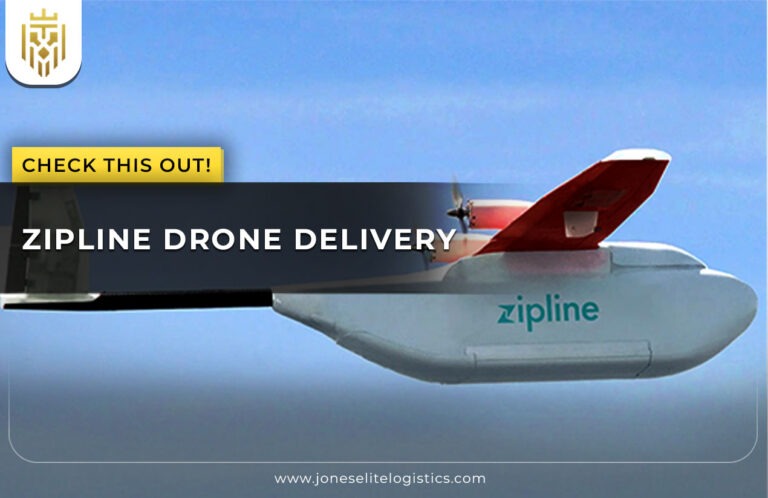The fast-food giant McDonald’s operates all over the world, serving approximately 69 million customers in more than 100 countries each day (MMA). The challenge of maintaining a uniform standard of food quality and freshness becomes a herculean task with the presence of 41,800 outlets globally. An advanced cold chain system, after all, that revolutionised the fast-food industry enables the company to deliver fresh ingredients to every restaurant, no matter how remote.
On such a huge scale, the logistics of supplying McDonald’s with fresh ingredients require a well-structured transport and storage system. An efficient cold chain system is vital to ensure food safety and consistency.
The Massive Scale of McDonald’s Food Transportation
McDonald’s operates a vast and highly coordinated food supply network, ensuring that fresh ingredients reach thousands of locations worldwide. Below is a look at how the company manages millions of orders and the logistics behind its global food transportation system.
Millions of Orders, Thousands of Locations
McDonald’s operates over 41,000 restaurants in more than 100 countries, serving millions of customers daily. Such demand for raw materials is excessive, warranting consistent fresh produce, dairy, meats, and frozen supplies feeding into an uninterrupted supply chain. Each of the restaurants would hence require the daily punctuality of deliveries so as not to misplace consumer demand while maintaining brand commitment quality.
Such massive operations are those usually taken to be practiced by the large scale manufacturing industries, which have steady traffic streams of transporting vehicles delivering food to several destinations. From fresh vegetables to frozen beef patties, everything has to be stored and transported under strictly controlled conditions for depletion from spoilage and preventive nutrient loss. Without an efficient logistics system, havoc in terms of food wastage and variance would be much elevated.
A Logistics Giant in the Food Industry
It is a unique, operational, well-coordinated system spanning many continents of McDonald’s, contrary to the erstwhile chains of restaurant supply. The company runs its supplies of food through a vast network of suppliers, warehouses, and distribution centres.
The whole process of logistics is that it is really very complicated when moving raw to such longer distances. The coordination required to be done is effective not only with suppliers but also with distribution hubs. Each food item has its own different storage needs, so it is important to have various temperature zones for frozen, chilled, and fresh products. A complete and effective monitoring for the most efficient use has to be done in every aspect of the logistics chain. Thus, his is to ensure that all McDonald’s locations receive the same quality of ingredients.

The Need for a Cold Chain System
When McDonald’s began to extend its operations into various regions, it became apparent that conventional supply chain methods fell short of food quality preservation. This extensive network includes approximately 200 distribution centres globally, which coordinate the delivery of fresh and frozen products to each restaurant an average of 2.5 times per week. Perishable ingredients, which needed refrigeration, would often reach their destination with compromised freshness, resulting in variations in taste and quality.
This predicament gave rise to McDonald’s developing a cold chain system that would guarantee the transportation of products under controlled conditions. By controlling the temperature through storage and transit, every meal prepared at a McDonald’s outlet was assured to be of the same standard of quality, wherever in the world.
How McDonald’s Cold Chain Requirements Transformed its Supply Network ?
To maintain consistency and quality across all its restaurants, McDonald’s had to develop an advanced cold chain system. The following sections explore how temperature-controlled logistics revolutionised its supply network and improved food safety.
Revolutionising Food Storage and Transportation
Bringing in cold chain logistics allowed McDonald’s to store and transport perishables under much more controlled conditions. An example would be the flash-freezing of frozen beef patties at extremely low temperatures to retain their textures and taste, whereas fresh vegetables like lettuce and tomatoes are car-travelled in temperature-controlled compartments to retain their crispness and flavour.
Refrigerated trucks organised with automated cooling systems serve to retain the just conditions of food in long-distance transportation. Following such steps, the spoilage rates have considerably declined along with betterment in food safety.
Technology Integration in the Cold Chain
McDonald’s cold chain system goes beyond refrigeration and deploys emerging technology to optimize the supply network. Temperature levels are continuously monitored inside the transportation vehicles, and real-time updates thereof are sent to logistics teams. Corrective actions can be taken immediately if a deviation occurs to keep the integrity of the food.
For example, artificial intelligence is the most potent in analysing demand patterns, having stock levels optimal at any moment. With predictive analytics, McDonald’s can fuse ”best-of-all-worlds” solutions to keep fresh ingredients flowing throughout its locations while minimising waste.
The Key Benefits of the Cold Chain
A well-organised cold chain has brought various advantages to McDonald’s operations. The biggest achievement it has gained is in food safety, as there is now more than ever control in temperatures that inhibit bacterial growth and contamination. There is also consistency in the ingredients used in the preparation of meals, thus giving customers the same world-class quality wherever they dine.
Cost efficiency is another important benefit. Due to a reduction in food wastage and also a shortening of the routes for transportation, the operational costs of the company have also been reduced. It not only increases customer satisfaction but also further builds the company’s reputation as a leader in safety and quality in food.
Using Hub & Spoke Model to Its Advantages
McDonald’s has adopted the hub and spoke distribution model to maximise efficiency in its supply chain. In this system, large distribution centres act as hubs where food is stored and processed before being sent to individual restaurants. This centralised approach allows McDonald’s to maintain strict quality control while reducing transportation time.
The hub and spoke model ensures that fresh ingredients come into the restaurants in a systematic manner so that there are no missed shipments and each site has an adequate supply always. The model also allows McDonald’s to ramp up its operations globally, entering new markets without compromising on the quality of its food served.

Distribution Centres as Centralised Food Processors
Distribution centres help McDonald’s to maintain the integrity of its supply chain. Apart from storing the ingredients, these centres also serve as food processors. Vegetables are washed and pre-cut, meat products are portioned, and frozen products are packaged according to strict guidelines.
Centralising these processes helps McDonald’s maintain a standard in producing food and minimises contamination. Quality control teams oversee every stage of the process, ensuring that all food items meet the company’s rigorous standards before they are shipped out to restaurants.
How McDonald’s Cold Chain Innovation Redefined Fast Food Logistics ?
McDonald’s continuous advancements in cold chain logistics have set new industry standards for efficiency and sustainability. Below, we explore the innovations that have reshaped fast food logistics and influenced global supply chain strategies.
Operational Efficiency and Customer Satisfaction
The efficiency with which McDonald’s has operated its cold chain has a direct impact on customer satisfaction. With a constant supply of fresh ingredients available, restaurants can quickly serve meals without sacrificing quality, which fosters the trust of customers in the brand and consequently aids in growth and expansion.
In conjunction with reducing waste, McDonald’s has optimised transportation logistics, enabling better operational efficiency in the company. Its prowess in dealing with such an unfettered supply chain while being mainly priced right has been predominant in the company’s successes.
A Model for the Industry
In demonstrating how perfect cold chain management can bring an overhaul to operations in the fast food industry, a new benchmark has been set by McDonald’s. Many other food chains have followed McDonald’s lead by employing similar cold storage and temperature-controlled transportation systems designed to enhance their own supply networks.
Other companies using the same model
Cold chain logistics have been utilised across the world fast-food brands like Burger King, Subway, and Domino’s Pizza to maintain the food quality in every corner of their locations. Following in the footsteps of McDonald’s, the companies have been able to create a uniform experience for customers wherever they may be.

The Cold Chain Strategy That Keeps McDonald’s Ahead
McDonald’s is said to be getting a lot of success because much of what they really do when it comes to food distribution throughout the world is innovating and adapting to what is needed to take on the challenges. Investing in cold chain warehousing, advanced logistics, well-structured supply networks, and so on has allowed the company to maintain food freshness as they deliver their millions of daily sales.
McDonald’s has revolutionised how fast food is transported and stored, thus making it possible to maintain quality standards on an unprecedented scale. Its continued innovations in logistics and supply chain management still keep McDonald’s at the helm in the fast food retail world, selling millions of burgers daily.
FAQs
1.How McDonald’s Cold Chain Requirements Transformed its Supply Network?
McDonald’s uses an enhanced cold chain operating system that provides food quality maintenance for more than 41,800 restaurants. The establishment provided for perishable ingredients in reducing waste and minimising inefficiencies in their supply chain by assuring distribution of fresh and frozen products through 200 distribution centres about 2.5 times per week.
2.How McDonald’s Cold Chain Innovation Redefined Fast Food Logistics?
McDonald’s cold chain logistics have been optimised with the use of AI temperature monitoring power and predictive analytics, thus minimising food waste and further assuring rapid replenishment. The company has also incorporated a hub-and-spoke distribution model, which has optimised its cold chain logistics, thus setting a whole new standard of fast food operational efficiency.









